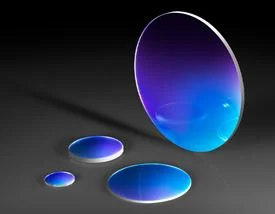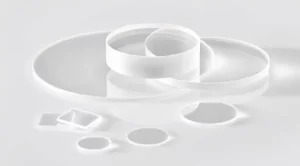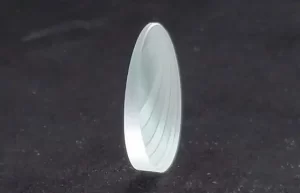Sapphire Windows: The Complete Guide
Sapphire windows are among the most important components in modern optics and engineering. Known for their strength, transparency, and durability, these optical materials are essential in lasers, defense systems, aerospace technology, consumer products, and even architectural innovations such as sapphire windows and doors.
In this blog, we will explore sapphire optical windows in detail: their properties, transmission capabilities, manufacturing processes, and applications. We will also review the differences between a sapphire glass window, synthetic sapphire window, and custom sapphire windows, while addressing considerations like sapphire window price and coating options such as AR coated window designs.

What is a Sapphire Optical Window?
A sapphire optical window is a flat, transparent piece of crystalline aluminum oxide (Al₂O₃) designed to transmit light across a broad spectrum. Unlike ordinary glass, sapphire is second only to diamond in hardness, which makes it scratch-resistant and highly durable.
Key features of sapphire windows include:
-
Exceptional sapphire window transmission from UV (200 nm) to mid-IR (5000 nm)
-
Extreme hardness (Mohs 9) for scratch resistance
-
High thermal stability, withstanding temperatures over 1000°C
-
Resistance to chemicals, acids, and mechanical stress
These properties make synthetic sapphire windows ideal for environments where traditional glass fails.

Types of Sapphire Windows
1. Sapphire Glass Window
A sapphire glass window is often used in consumer applications such as watches, smartphones, and precision instruments. Compared to regular glass, it resists scratches, impacts, and high temperatures, ensuring long-term clarity.
2. Synthetic Sapphire Window
Most optical-grade sapphire windows are synthetic, produced by methods like the Czochralski or Kyropoulos process. These windows provide consistent optical quality and are available in various sizes, including large sapphire windows for aerospace and defense systems.
3. AR Coated Window (Anti-Reflective Coating)
To improve performance, many sapphire windows are treated with AR coatings. An AR coated window reduces reflection losses, increases transmission, and is especially useful in laser systems and imaging optics.
4. Custom Sapphire Windows
For specialized requirements, custom sapphire windows can be manufactured in specific diameters, thicknesses, and coatings. Examples include sapphire windows with through-holes, beveled edges, or infrared-optimized surfaces.

Optical Properties: Sapphire Window Transmission
One of the main advantages of sapphire is its wide transmission range. A typical sapphire optical window provides:
-
UV transmission down to ~200 nm
-
Visible transmission across 400–700 nm with excellent clarity
-
IR transmission up to ~5000 nm
This broad sapphire window transmission range makes it ideal for laser optics, IR sensors, spectroscopy equipment, and biomedical imaging.

Applications of Sapphire Windows
1. Scientific Research
-
Lasers and spectroscopy require sapphire optical windows due to their stability under high-power light sources.
-
Laboratory instruments benefit from custom sapphire windows tailored for precision alignment.
2. Industrial and Aerospace
-
Large sapphire windows are used in aerospace vehicles for sensor protection.
-
High-pressure environments, such as underwater cameras or oil exploration tools, use synthetic sapphire windows for durability.
3. Medical Devices
-
Endoscopes, surgical instruments, and diagnostic tools rely on sapphire glass windows for their resistance to sterilization and chemical cleaning.
4. Consumer Electronics
-
Smartphones, luxury watches, and cameras integrate sapphire glass windows for scratch-free durability.
5. Architectural Innovations
-
While rare, sapphire windows and doors represent futuristic building materials, combining durability with striking transparency.
Buying Considerations: Sapphire Window Price and Customization
When selecting sapphire optical windows, consider the following factors:
-
Size and Thickness
-
Larger diameters and thicker windows cost more, especially for large sapphire windows.
-
-
Coatings
-
An AR coated window improves performance but adds to sapphire window price.
-
-
Customization
-
Custom sapphire windows with through-holes, shapes, or bevels are priced higher due to manufacturing complexity.
-
-
Synthetic vs Natural
-
Most commercial options are synthetic sapphire windows, ensuring availability and cost-effectiveness.
-
📌 Sapphire window price can range from tens of dollars (small optical windows) to thousands of dollars (large aerospace-grade windows) depending on specifications.
Advantages of Sapphire Over Other Materials
-
Hardness: Only diamond is harder.
-
Thermal Endurance: Survives high heat and thermal shock.
-
Chemical Resistance: Unaffected by most acids and alkalis.
-
Broad Spectrum Transmission: From UV to IR.
-
Durability: Long lifespan in harsh conditions.
Compared to fused silica or standard glass, a window sapphire offers far superior durability and optical clarity.
FAQ: Sapphire Windows
Q1: What is the difference between a sapphire glass window and a sapphire optical window?
A sapphire glass window is commonly used in consumer electronics and watches, while a sapphire optical window is precision-engineered for scientific, industrial, and aerospace applications.
Q2: What is sapphire window transmission?
Sapphire windows transmit light from UV to mid-IR (~200–5000 nm), making them versatile for many optical systems.
Q3: Are custom sapphire windows available?
Yes. Many manufacturers provide custom sapphire windows with specific diameters, coatings (e.g., AR coated window), or through-holes.
Q4: What is the typical sapphire window price?
Prices vary widely: small windows may cost under $100, while large sapphire windows for aerospace can reach several thousand dollars.
Q5: Can sapphire windows be used in architecture?
Yes. Though rare, some designs feature sapphire windows and doors, demonstrating sapphire’s strength and aesthetic appeal.
Conclusion
Sapphire windows are indispensable in modern optics and engineering. From sapphire glass windows in consumer devices to large sapphire windows in aerospace, they deliver unmatched strength, broad-spectrum transmission, and resistance to harsh environments.
Whether you need a synthetic sapphire window, a specialized AR coated window, or custom sapphire windows, sapphire remains the premium choice for optical clarity and durability. While sapphire window prices may be higher than alternatives, the long-term performance justifies the investment.
By understanding the properties, applications, and buying considerations of sapphire optical windows, engineers, scientists, and manufacturers can select the right solution for their unique challenges.
Sapphire windows sometimes is for medical use.
We also have medical furnitures for your needs.